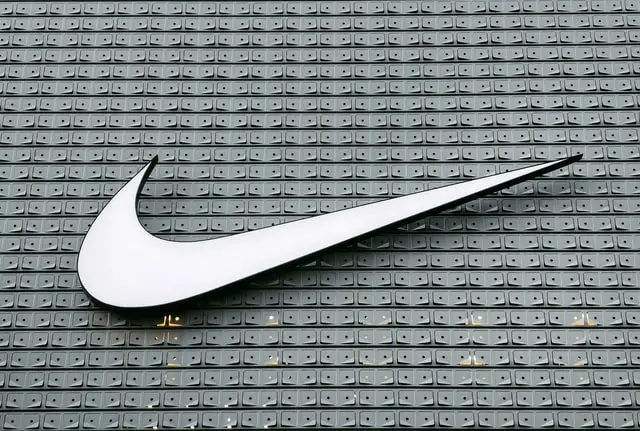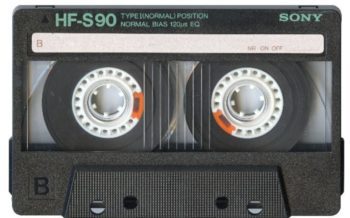
To quote Goerge Costanza while he was watching “Blimp”: “Ouch. That’s GOTTA hurt!”
This one’s for you sports fans (or even if you don’t like sports at all). The story of Magic Johnson not signing with Nike It’s a great tale of the rise of sports endorsements in the 80s, one of the most successful companies of all time, and how much it would have been worth.
In 1980, an upstart company named Nike tried to sign the newest NBA superstar, Magic Johnson. They didn’t have a lot of money so offered a stock deal. Johnson ended up singing with converse and it’s reported that the deal he turned down would have made him a multi-billionaire today.
So let’s journey back to the last 70s and early 80s, but take a look at the man himself and his rise to prominence in the world of basketball.
*sings in head* “they’re playing basketballlllll, they’re playing baksetballlllll….”
The Rise of Magic Johnson
If you’re not a sports fan, you may at least know Magic Johnson from his appearance on the Simpsons: “looks like I pulled a Homer…”
But here’s a quick recap on the career of one of the best athletes in history. Earvin ‘Magic” Johnson was born in 1959 in Lansing, Michigan. Turns out, he and I are pretty much neighbors. He was born to working-class parents so that work ethic was instilled in him at a young age.
But Johnson had a lot of other natural gifts.
He was tall and gravitated toward the game of basketball. He took to it quickly. Johnson would routinely put up 30-point, triple-double games while in high school. If you don’t know basketball–That’s good. Like, really good.
It was his prolific scoring–and absurd ability on the court–that gave him the nickname, ‘Magic.’
When it came time to decide on college, Magic was not surprisingly recruited by every college under the son. He chose nearby Michigan State and began his incredible college career. He was far from peaking in high school and continued his dominance into the NCAA.
He led his team to a championship beating a young Larry Bird and his Indiana State team. He also accomplished this as a sophomore.
When it came time for the NBA draft, Johnson was chosen first overall by the L.A. Lakers. There was zero transition from college to the pros as Magic dominated the league at an early age. In just his first year, he was able to step up as a leader and lead the Lakers to a championship.
In the finals–as a rookie, keep in mind–he won MVP honors.
We could be here all day discussing his athletic legacy, but here are a few highlights:
- Played 13 seasons and even coached 13 games as a player
- 5 NBA championships
- Was an All-Star 12 times
- 3 x NBA finals MVP
- 3 x NBA MVP
The State of the Money in the NBA in the Early 80s
So this is the point of this whole story: the time Magic Johnson turned down a deal with Nike.
It’s important to point out a few things here. The first is that the NBA was not the financial juggernaut it is today. TV contracts and league value weren’t not well established yet. It was growing for sure–but not at the rate it would in future years.
Johnson signed–at the time–the richest deal in sports history. L.A. signed him for a crazy 25-year, $25 million contract. Converted for today, this is around $70 million. This amount of money is nothing to sneeze at, but you know that it has nothing on the current sports contracts out there.
For example: Tom Brady–in the later stages of his career now–signed for $50 million for just two years. With incentives, he could make a total of $60 million.
It’s not that Magic wasn’t worth more–it’s just the money wasn’t there yet. And the same thing was happening with shoe companies.
The concept of celebrity shoe endorsements–and hundred million dollar athlete deals–was not even a thought at the time. No shoe companies had really endorsed anyone before, and it wasn’t on the level we now know it.
NBA icons like Dr. J worked with Converse, but this was more about him wearing the shoes than creating a huge branding movement with marketing and commercials seen all over the world.
The Dr. J/Converse connection is something important to remember for this story…
If you’re interested in another game-changing shoe company, check out my blog on the history of British Knights here.
A New Shoe Company Enters the Market
If you haven’t read the brilliant book “Shoe Dog” by Phil Knight–definitely check it out. It’s an amazing look at the upstart company and all the trials they faced in those early days.
But here’s a quick summary of the state of Nike going into the early 80s. Nike was completely based on running. Track and field was their bread and butter and they saw no reason to start from that. They signed with some significant marathon runners, but these people were hardly household names.
At the same time, the NBA was starting to grow in prominence. Athletes like Wilt Chamberlain, and Dr. J had become breakout stars–but the best was still yet to come. One of the best was a young Magic Johnson.
Seeing the new possibility of getting on board with high-profile superstars, Phil Knight knew he needed to create a partnership to further launch Nike into the public. Nike was successful–don’t get me wrong–but it was more of a local success instead of a national and global one.
They decided that Magic was the perfect guy to sign with them. But there was a big problem: they didn’t have any money.
It was hard keeping the company afloat and the more they grew–the more they actually were losing money. It’s a weird business phenomenon that I don’t understand, but it’s explained pretty well in Shoe Dog.
Nike Approaches Magic Johnson For a Partnership
I need to point out that Magic signed his big contract in 1981. In 1979/1980 he wasn’t exactly wealthy despite being an NBA player.
Phil Knight approached Magic about a partnership but was upfront about the fact they were strapped for cash. Instead of cash, Knight offered Johnson a stock-based deal. Knight was confident in the future of Nike and was offering a huge amount of shares to get him to sign.
Johnson knew nothing about shares and didn’t see how a company could come to him without offering him any money. It was also hard to buy into an upstart shoe company that wasn’t working with any notable athletes.
It was also hard to tell if they were even going to be around the following year. There were several shoe companies springing up, and there’s no telling which would last. And the fact they couldn’t offer any cash wasn’t a good sign that they would be a lasting success.
Johnson was also being approached by every company you could ever think of.
It’s not that shoe endorsement deals weren’t a thing, but they still needed to offer cash of some sort–or so Magic thought. Since Dr. J (not a real doctor) was his hero, he decided to sign with Converse which was more than happy to get on board with the new superstar.
Nike had to lick their wounds and crawl away. But it obviously worked out ok for them.
How Much Money Did Magic Johnson Miss Out on by Not Signing With Nike?
OK, it’s math time–but I think I’ve broken this down well enough to give you the gist of it.
Nike obviously ended up ok, and they went public in 1981–right around the time Magic was signing his monster deal. (not with the drink company…).
For the first Nike IPO, they sold off their shares for only 18 cents each. The other part of these stocks is a little confusing but they basically existed in a 2 for 1 format. Over the years, this meant that the stocks you owned would double.
If you bought just one share in 1980, it would have turned into 128 shares and that one share would be worth nearly $12,000 today.
But that’s one share. Let’s look at what would happen if you bought $1000 worth of shares from that first IPO. That thousand dollars would have bought you 5,555 shares. And remembering the 2 for 1 aspect that Nike had with their shares, it would mean that today, those 5,555 would have turned into 711,040.
Right now, Nike stock closes at around 92.16 per share, so that means the $1000 you invested back then would be worth $65 million today. Yowza.
It’s pretty safe to say that Nike offered Johnson a lot more than just $1000 worth of shares. Nike or Johnson has never shared exactly how many shares they offered, but let’s take a look at this.
Converse–or any other companies–were not offering multi-million dollar endorsement deals in the early 80s. According to ESPN, Dr. J’s first deal with converse was worth $20,000. Seems like peanuts today, but this was an unprecedented deal at the time.
Let’s assume that Nike would offer at least half of that to Magic as he wasn’t yet as established as Dr. J. $10,000 worth of Nike stock from 1980 would now be worth over $650 million. But what if it was $20,000 worth of stock (still a reasonable amount), we’re looking at $1.3 billion.
Again, no way to know the exact amount but it’s been mentioned by Inc.com that Johnson would be a multibillionaire had he taken the deal.
In one last kick in the teeth, Nike would end up buying Converse in 2003.
Things Worked Out OK for Johnson and Nike
This is far from a sad story. In 1982, a hotshot new college basketball player would be wearing Nike’s shoes in the NCAA finals and would continue to as he went into the NBA. And that player’s name was *checks notes* Michael Jordan.
Today, Nike generates nearly $40 billion a year and changed the face of sports.
But Magic has done OK for himself, too. He started Magic Johnson Enterprises where he’s invested in everything from fast food locations to pro sports teams to real estate. MJE has holdings of around $1 billion and Johnson is considered to be worth $600-700 million.
The story of when Magic Johnson didn’t sign with Nike is an amazing look back on the early days of pro-athlete endorsements. It’s also about hindsight and not being able to predict what will be successful and what won’t.
Magic still says he’s kicking himself about not taking the deal, but it’s understandable when you look at all the issues surrounding the first deal.



